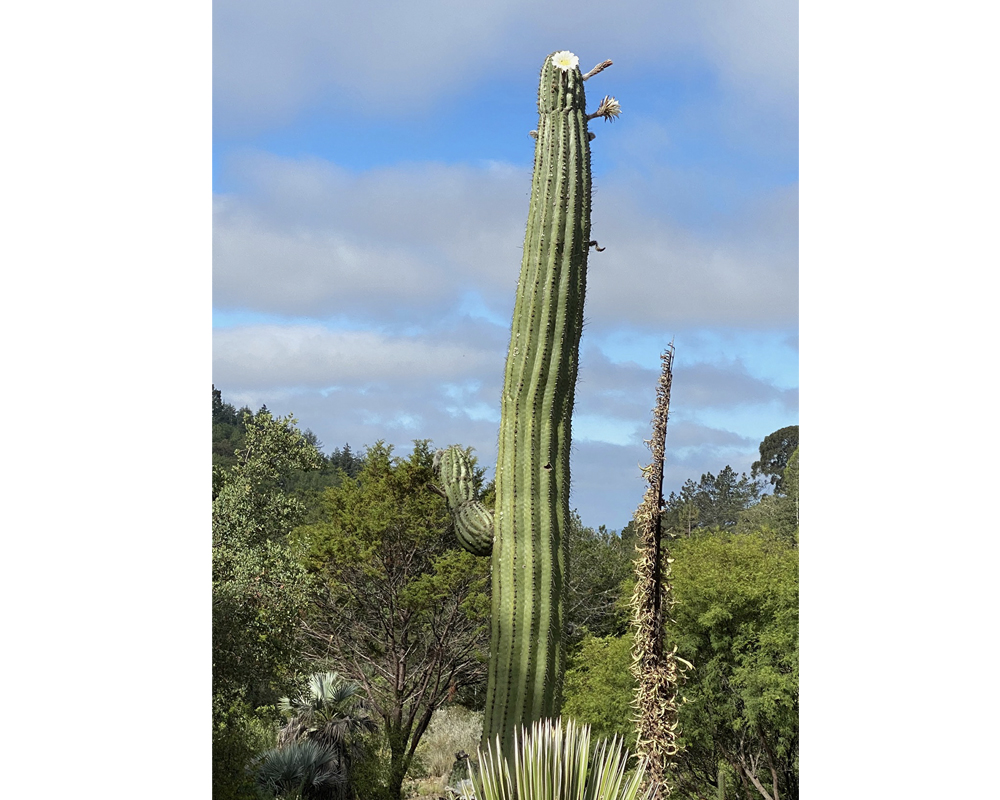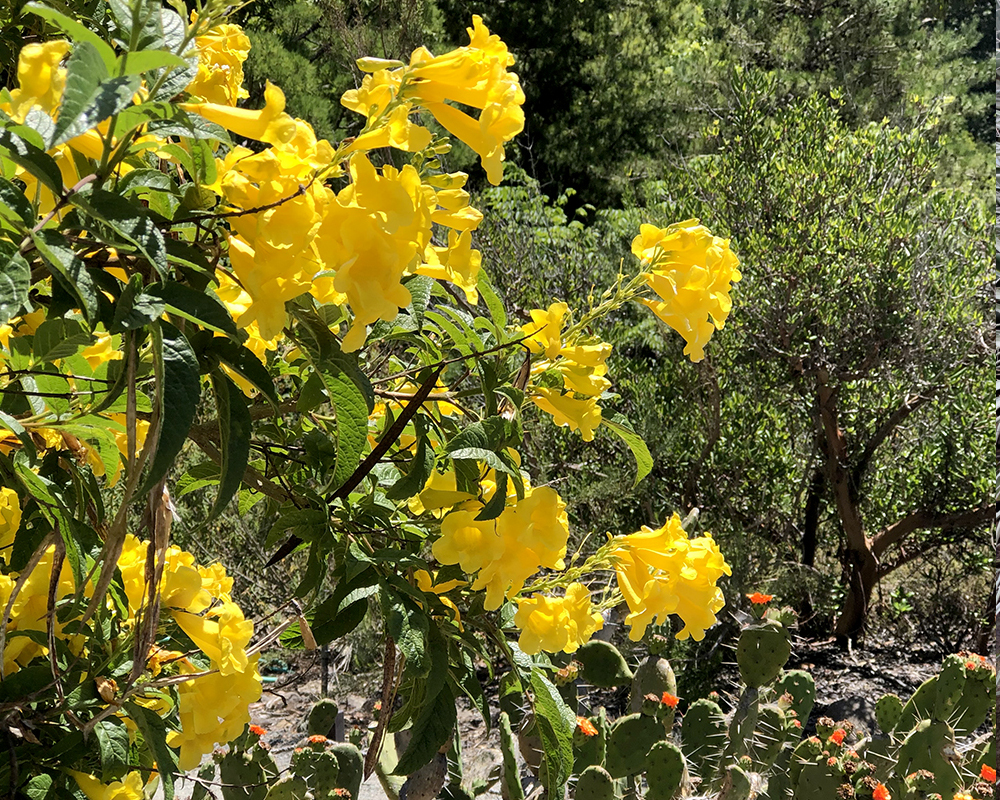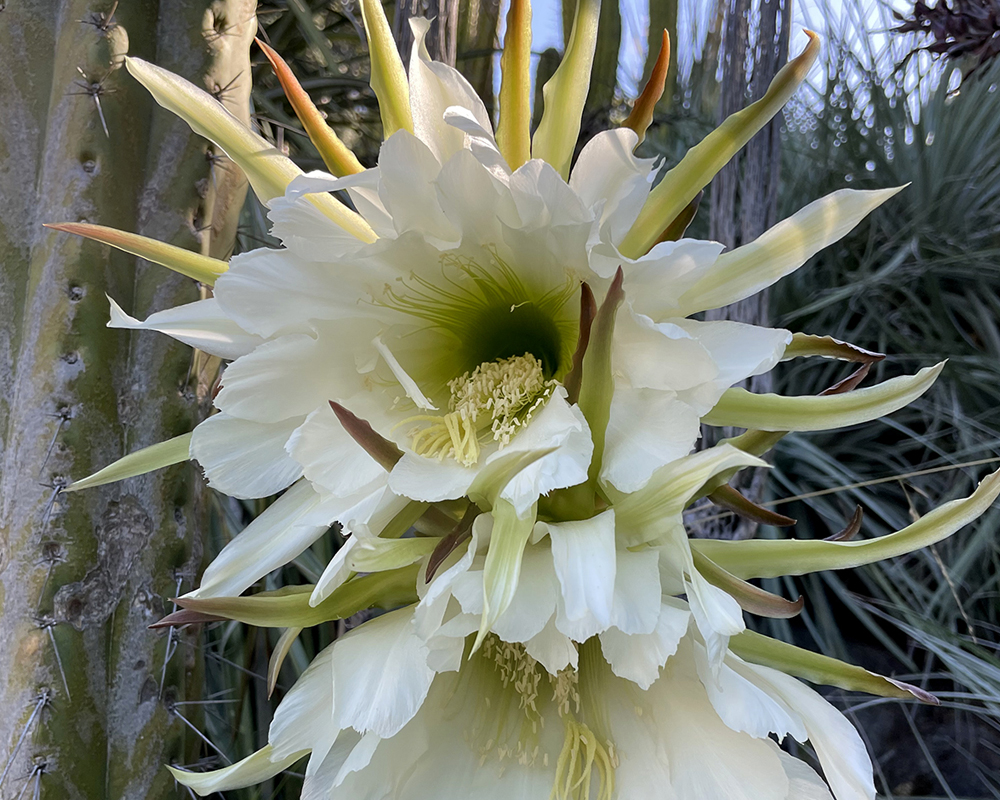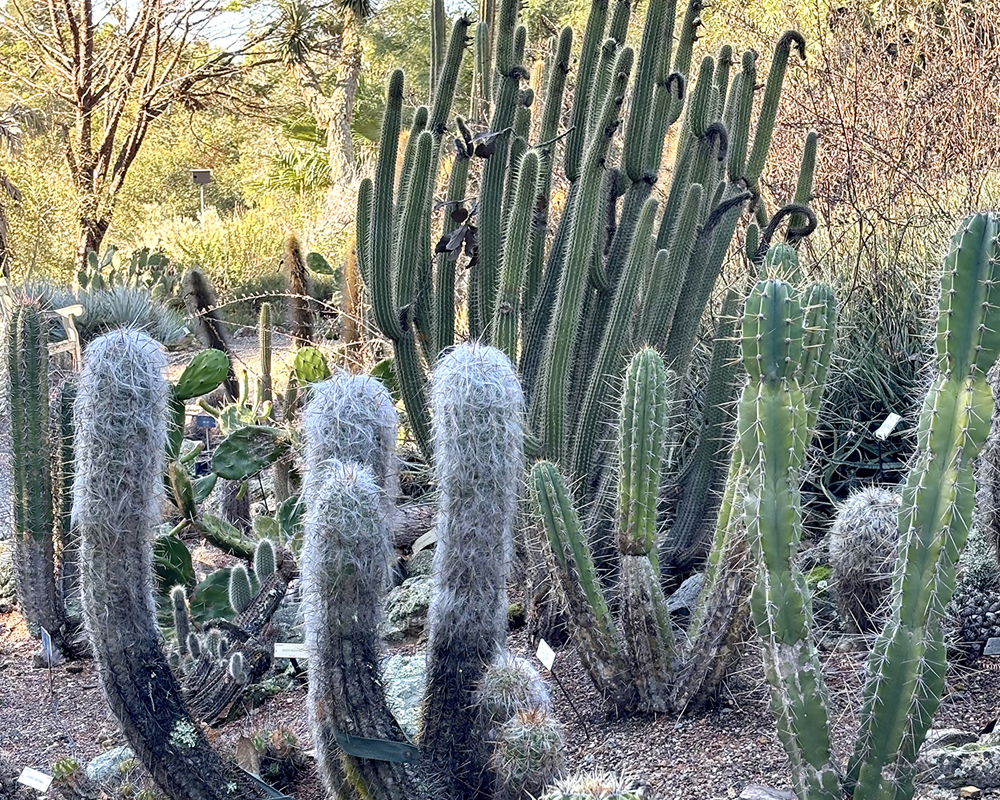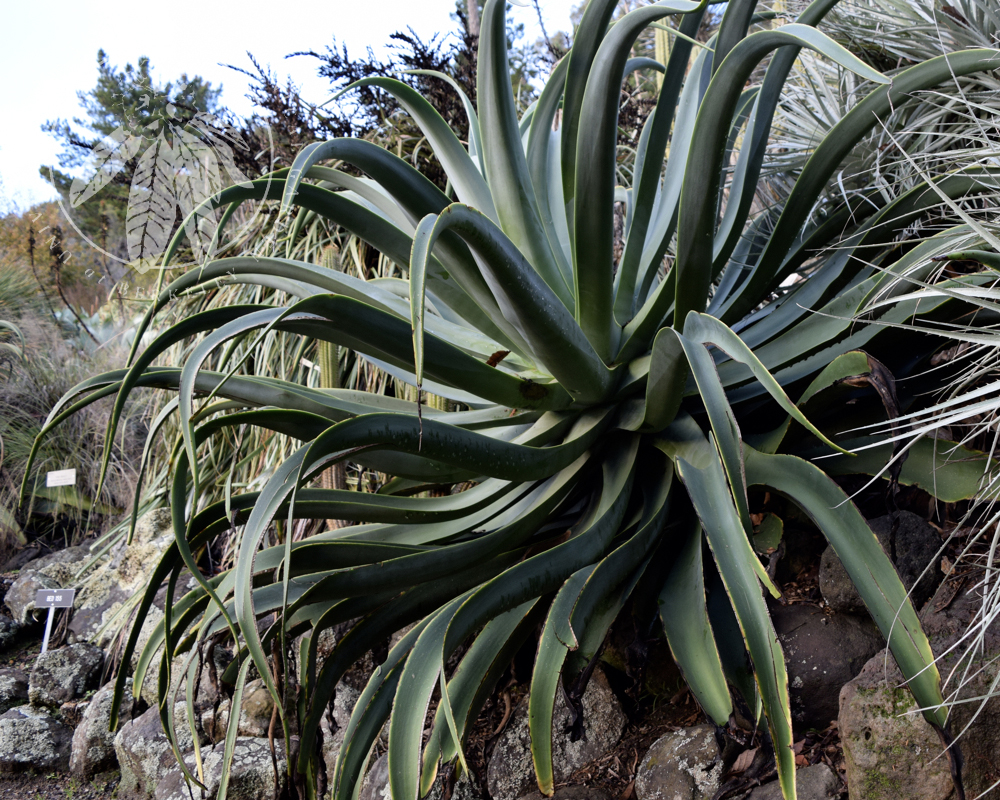
Deserts of the Americas
An iconic collection showcasing plants from arid regions in both North and South America, this area contains some of the oldest plants in the Garden. Deserts are among Earth’s most extreme environments, which means they’re home to some of the most creative, adaptive plants in the world.
In particular, desert plants have evolved amazing strategies to thrive in places where water is scarce and the temperatures are inhospitable. These areas receive 10 inches or less of rain each year; in some deserts rain might not occur for a year or even more. Because many of these plants can’t tolerate the San Francisco Bay Area’s winter rains, positioning the collection on a southwest-facing slope provides warmth and drainage critical to their survival.
Regions and History
The core of this area was established in the 1930s, and it contains plants collected during historic UCBG expeditions to South America from the 1920s to the 1960s. Desert plants from the southwestern United States, Mexico, and as far south as Chile and Argentina make up the balance. Two beds feature plants from Mexico’s Baja California peninsula. Plants in the cactus family naturally occur only in North and South America, with the exception of one species of Rhipsalis in Africa. In the tropics some cacti are epiphytes, which means that they’re plants that grow on other plants.
All cacti are succulents, but not all succulents are cacti. Plants from desert environments in different parts of the world may have similar structural forms, resulting from a process called “convergent evolution.” Compare the leaf rosettes of agaves with those of the southern African aloes.
Collection Highlights
One of the Garden’s most spectacular plants is the giant cactus, Echinopsis terscheckii. This columnar cactus is native to fairly high altitudes in the Andes of Argentina. Don’t confuse it with the saguaro (Carnegiea gigantea), an iconic plant native to the Sonoran Desert of southern Arizona and northern Mexico, where it is generally found growing from sea level to approximately 1200 meters (4,000 ft) in elevation. (Because most saguaros can’t tolerate the relatively damp climate of the Bay Area, they are protected in the Arid House.) Echinopsis terscheckii produces enormous white flowers, which are pollinated by nectar-eating fruit bats.
Habitat loss and over-collecting for the horticulture trade have endangered many cacti and succulents. The Garden has many species that are rare and endangered in the wild.
Banner: Opuntia sp. Sandy Steinman
